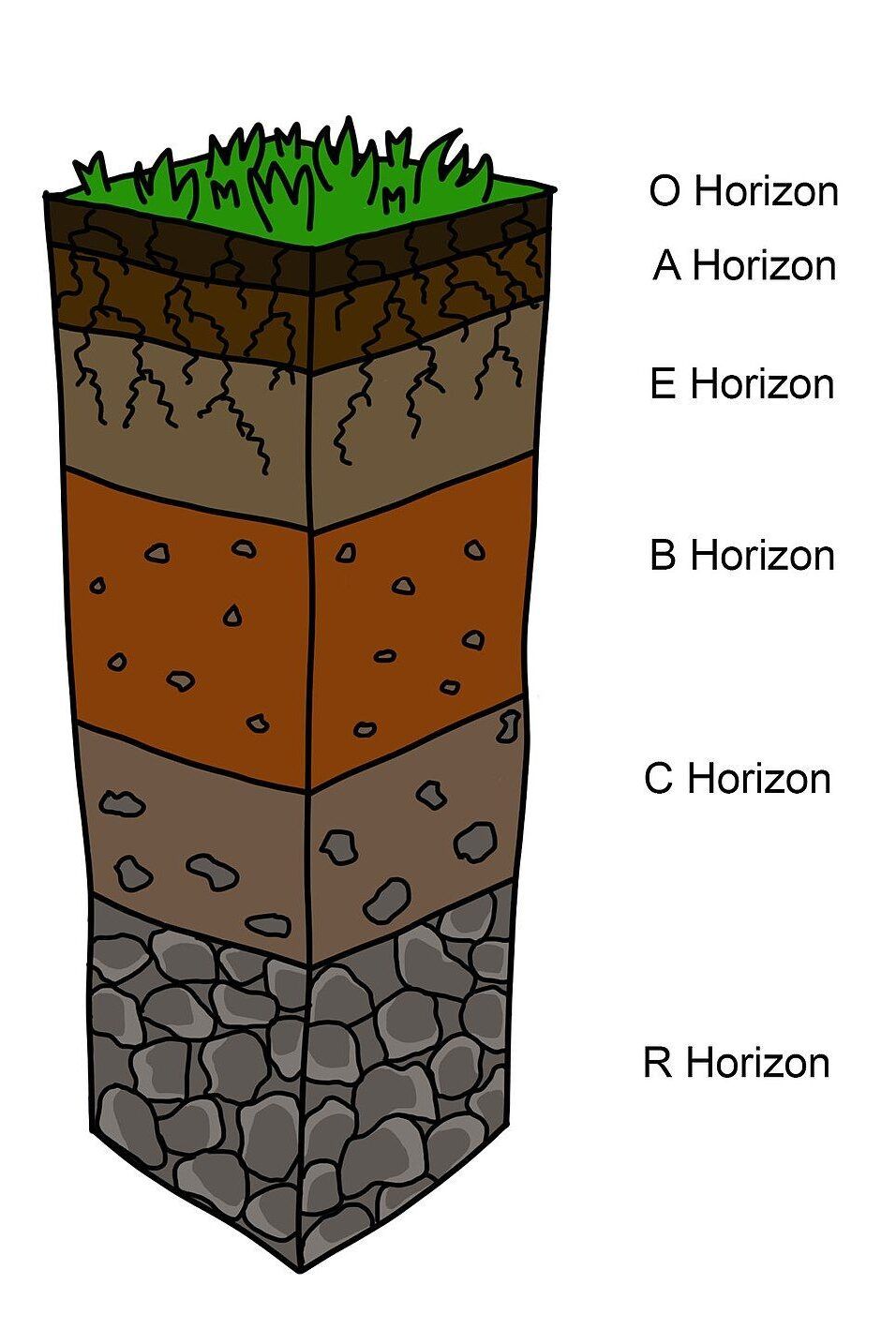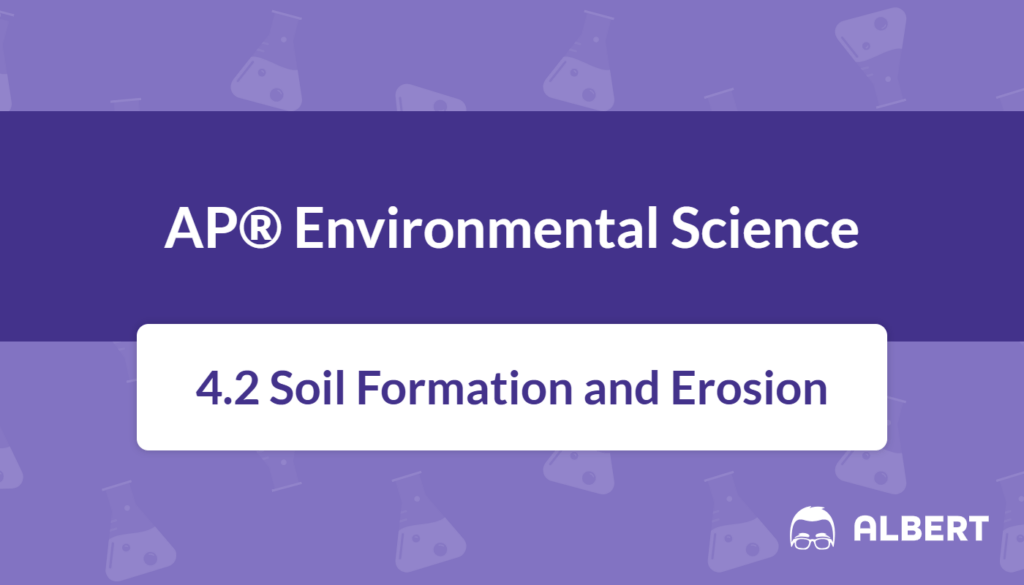What We Review
Introduction
Soil is a fundamental component of life on Earth, providing plants with vital nutrients, influencing water quality, and supporting diverse ecosystems. It acts as a filter that helps purify water passing through it, affecting local and global water supplies. Moreover, soil allows crops to grow, which ensures food for humans and wildlife. However, soil can deteriorate over time due to various processes, including erosion by wind and water. Understanding how soil forms and how it can be protected is crucial in AP® Environmental Science. Therefore, this article explores the steps involved in soil formation, the layers (or horizons) of soil, and how best to conserve this essential resource.
What Is Soil Formation?
Soil formation refers to the dynamic process by which rocks and organic matter gradually transform into fertile layers that support plant and animal life. Parent material (like rock or volcanic ash) undergoes changes when it is first weathered into smaller fragments, then transported by agents such as water or wind, and eventually deposited in a new location where components can accumulate to form soil.
Soil formation generally takes a very long time. Consequently, understanding how it forms—and how that formation can be disrupted—highlights the importance of protecting existing soils. Key terms in this process include “weathered,” “transported,” and “deposited.” Recognizing these definitions is helpful for identifying the major stages of soil development.
The Process of Soil Formation
Soil formation involves three main steps: changes in parent material, weathering, and the movement and deposition of sediments. Each step relies on specific environmental factors such as temperature, rainfall, and biological activity.
1. Parent Material
Parent material is the foundation or starting point for soil. It can consist of bedrock, volcanic ash, or even sediment left behind by glaciers. The type of parent material influences the soil’s mineral composition and texture. For instance, granite—a type of igneous rock—tends to weather into sandy soils due to its high quartz content.
Example (Step-by-Step):
- Solid granitic rock exists beneath an ecosystem.
- The rock undergoes physical and chemical breakdown over many years.
- Over time, smaller particles of sand accumulate to eventually form the basis of a new soil layer.
2. Weathering
Weathering is the process that breaks down rocks into smaller pieces. There are three kinds of weathering: physical, chemical, and biological. Physical weathering occurs when mechanical forces like freeze-thaw cycles split rocks into smaller fragments. Chemical weathering takes place when chemicals, such as acids from rainwater, react with minerals in rocks. Biological weathering happens when living organisms (for example, plant roots) penetrate and fracture rocks.
Example (Step-by-Step):
- During cold winter nights, water in rock cracks freezes.
- Because frozen water expands, the cracks in the rock widen.
- Eventually, pieces of rock break off, producing smaller particles. These weathered fragments will contribute to forming soil.
3. Transport and Deposition
After weathering, soil particles can be moved by wind, water, or gravity—this movement is called transport. Eventually, the particles settle or get deposited in new areas, where they can accumulate as layers of soil. Rivers are notable for carrying large amounts of sediment. Consequently, floodplains surrounding rivers often have especially fertile soils due to repeated layers of deposited sediments.
Example (Step-by-Step):
- River water flows downstream, picking up tiny rock fragments and other debris.
- Once the water’s velocity slows, it drops these sediment particles.
- Over time, deposited layers build up, forming new soil horizons with distinct characteristics.
Soil Horizons and Composition
Soil typically organizes itself into several layers, or horizons, each with unique qualities. Together, these horizons create the “soil profile.” Recognizing soil horizons is valuable when analyzing how well an area might support agriculture or wildlife.

- O Horizon (Organic Layer): This top layer consists mainly of decomposed leaf litter and other organic materials.
- A Horizon (Topsoil): The uppermost mineral layer, rich in organic matter and microorganisms, often vital for plant growth.
- E Horizon (Eluviation Layer): A zone where minerals are leached (moved downward) by percolating water.
- B Horizon (Subsoil): Accumulates minerals such as iron and clay. This horizon often stores nutrients leached from the upper layers.
- C Horizon (Parent Material): Composed of partially weathered parent material; less biologically active than the layers above it.
- R Horizon (Bedrock): The unweathered rock foundation beneath all other layers.
Example:
- Healthy garden beds often display a robust O and A horizon, packed with organic matter. These soils retain water efficiently and provide nutrients to plants.
- In contrast, poor soils may have a thin O horizon and little organic content, leading to frequent water runoff and limited fertility.
Understanding Soil Erosion
Soil erosion is the process by which soil layers get stripped away and carried elsewhere, often by wind, water, or even human activities. Erosion can occur naturally, but human impacts—such as deforestation or intensive farming—can accelerate it. When rainstorms are heavy, water runs off the surface, picking up topsoil particles. Consequently, farmland may lose key nutrients over time. Wind can also detach lighter particles, like silt and sand, resulting in dust storms or land degradation.
Erosion Rate Calculation (Simple Illustration)
Although detailed equations are more common in advanced studies, a basic formula can help illustrate how different factors influence soil loss. A simplified version of the Universal Soil Loss Equation (USLE) might look like this:
\text{Soil Loss (A)} = R \times K \times LS \times C \times P- R stands for rainfall intensity.
- K is soil erodibility.
- LS represents slope length and steepness.
- C denotes cropping or vegetation cover.
- P refers to conservation practices.
Even small changes—like adding cover crops or reducing the slope—can decrease total soil loss significantly.
The Importance of Protecting Soils
Healthy soil is critical for agricultural productivity, water filtration, and overall ecosystem balance. Therefore, experts recommend soil protection strategies to reduce erosion. Methods include:
- Cover cropping: Planting crops (often legumes or grasses) in off-seasons prevents the soil from lying bare.
- No-till farming: Farms avoid or limit plowing, retaining organic residues to stabilize the soil surface.
- Windbreaks: Rows of trees or shrubs buffer fields, shielding them from heavy winds and conserving topsoil.
- Terracing: Stepped formations on hillsides reduce runoff speed and soil erosion.
When such practices are followed, ecosystems become more resilient, and the soil’s ability to filter water is maintained. Consequently, water supplies remain cleaner in rivers and groundwater reserves.
Real-World Example: Heavy Rainfall on Farmland
Imagine a sloped field planted with corn. Following days of intense rainfall, water runs along the slope, carrying loose topsoil into a nearby stream. Nutrients and fertilizers then flow into waterways, degrading water quality and creating turbidity. Over time, repeat erosion would reduce soil depth and productivity in that field. By contrast, a farm that adopts cover cropping or uses terracing can dramatically diminish surface runoff and soil displacement.
Conclusion
Soil may appear static, but it forms and wears away continually through complex natural processes. It begins with parent materials that are weathered, transported, and deposited, eventually evolving into layered soil profiles capable of sustaining plants and filtering water. However, soil erodes readily, particularly when left unprotected. Therefore, protecting and preserving soil through methods like cover cropping and no-till farming is essential for agricultural success and environmental health. In many regions, local soils support food production, store carbon, and nurture biodiversity, making soil care a central issue in AP® Environmental Science.
Important Vocabulary
- Weathered – The process by which rocks are broken down into smaller particles due to physical, chemical, or biological factors.
- Transported – Refers to the movement of weathered materials by wind, water, or other natural forces.
- Deposited – The settling of soil or rock particles in a new location, forming layers that can become soil horizons.
- Parent Material – The original geological material (e.g., bedrock or volcanic ash) from which soil forms.
- Soil Horizon – A distinct layer of soil, each with specific characteristics and composition.
Sharpen Your Skills for AP® Environmental Science
Are you preparing for the AP® Environmental Science test? We’ve got you covered! Try our review articles designed to help you confidently tackle real-world AP® Environmental Science problems. You’ll find everything you need to succeed, from quick tips to detailed strategies. Start exploring now!
- AP® Environmental Science: 3.7 Review
- AP® Environmental Science: 3.8 Review
- AP® Environmental Science: 3.9 Review
- AP® Environmental Science: 4.1 Review
Need help preparing for your AP® Environmental Science exam?
Albert has hundreds of AP® Environmental Science practice questions, free response, and full-length practice tests to try out.








